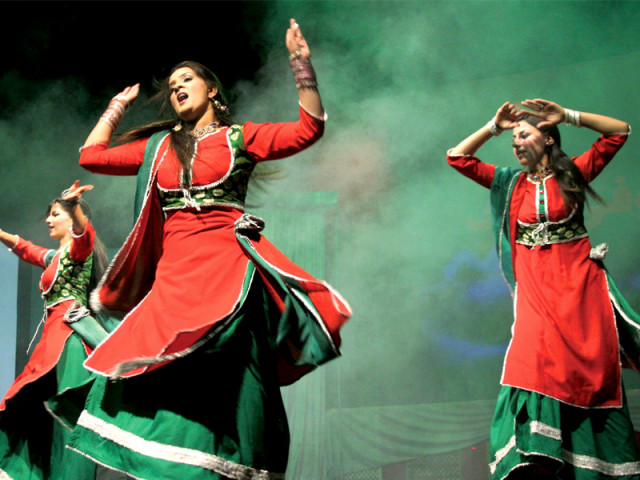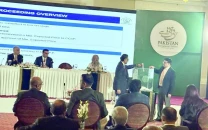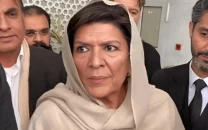Sufi night: Classical ghazals, dhammal leave audience finding words for praise
The event featured a performance by legendary singer Ustad Shaukat Manzoor.

Sufi night: Classical ghazals, dhammal leave audience finding words for praise
Much to the delight of the audience at PNCA, it was none other than the noted classical singer Ustad Shaukat Manzoor who performed for them on Wednesday night.
It came as a pleasant surprise as many were not expecting his presence.
The “Sufi Night” was organised by the Pakistan National Council of the Arts (PNCA) as a part of its two-day programme to entertain people. The legendary singer treated the packed hall of enthusiastic listeners to some renditions of Sufi kalaams (mystic verses) in ghazal form.
“I had no plan to attend this event. A few of my friends were coming so I tagged along and I am glad I did because Manzoor is my favourite,” said Faisal, 35, a Rawalpindi-based accountant.
For the past one year, Sufi nights have been a staple of PNCA to preserve Pakistan’s rich musical heritage and promote fresh talent.
Apart from Shaukat, his 14-year-old student Hira Nadeem Shaikh also performed at the event, showcasing what she had learnt from the maestro. Her performance, featuring Arif Lohar’s “Jugni “and Nusrat Fateh Ali Khan’s “Mera Piya Ghar Aaya”, were well-received by the audience except for a few hecklers.
Though Shaikh has only been under his training for two months, she feels she has learnt a lot and her skills and techniques are already evolving.
“He has given me enough confidence to perform in front of a hall full of people,” she said while talking to The Express Tribune.
The ninth grader also praised her teacher for his punctuality and his introvert personality, saying that it was unlike most celebrities of his stature.
“Our classes always begin on time, which gives me more time to learn and practice,” she said.
Peppering the singing tributes to the kalaams was PNCA’s resident dance crew, NPAG, with their five performances set to sufi music.
Starting off with Ameer Khusro’s “Hajran”, they proceeded to Bulleh Shah’s “Chehti bori wey tabiba”, Sachal Sarmast’s “Sohne yaar di gharoli” and Abrarul Haq’s “Tere rang rang” before ending the night with a dhamaal on the Bollywood’s version of Nusrat Fateh Ali Khan’s “Dam Mast Qalandar Mast”.
The eight-part dance group’s dhamaal was decidedly more mystic-influenced, with turns of Turkish dervaish and even some khattak moves thrown into the mix. The performance had a more primal feel to it compared to other more heavily choreographed numbers.
The dancers - Azeem, Javed, Nasir, Sohail, Sumbul, Sehrish, Fatima and Ghazala - shared that they have been with the group for the past seven years, training under Zoha Chaudhry.
“She is primarily a folk dancer and has taught us a lot of provincial dances, especially those from the northern areas,” said Azeem.
He also said that he had joined the group to pursue his passion but now takes it as a profession. On average, a dancer’s salary ranges from Rs11,000 to Rs15,000 per month. However, they say working in a profession one enjoys is a form of payment in itself.
Published in The Express Tribune, July 20th, 2012.



















COMMENTS
Comments are moderated and generally will be posted if they are on-topic and not abusive.
For more information, please see our Comments FAQ